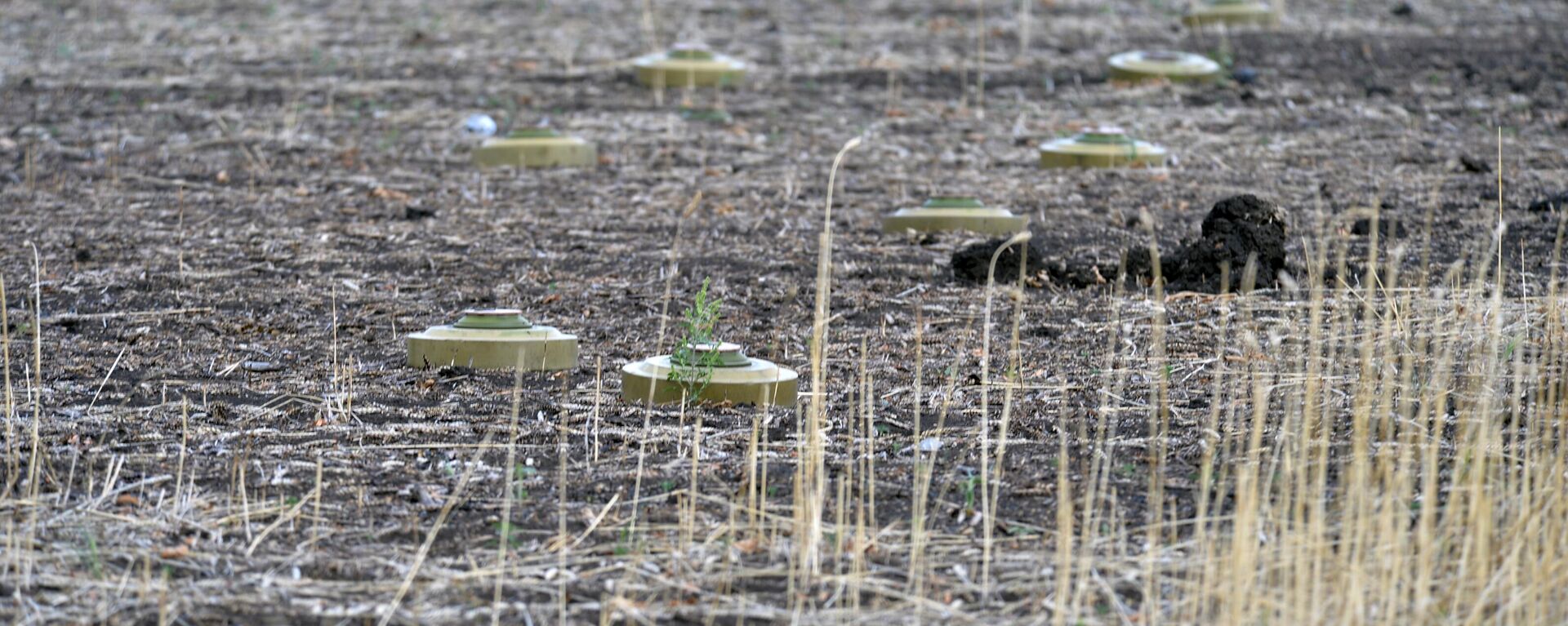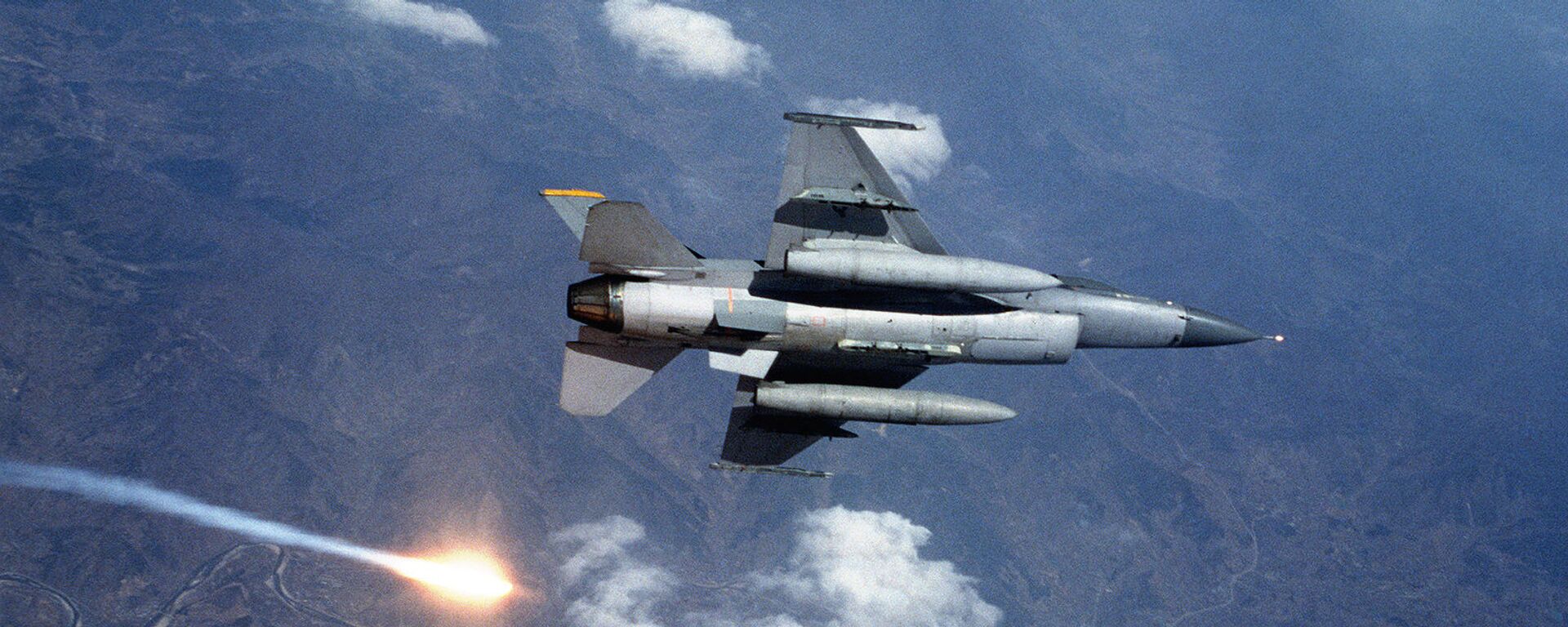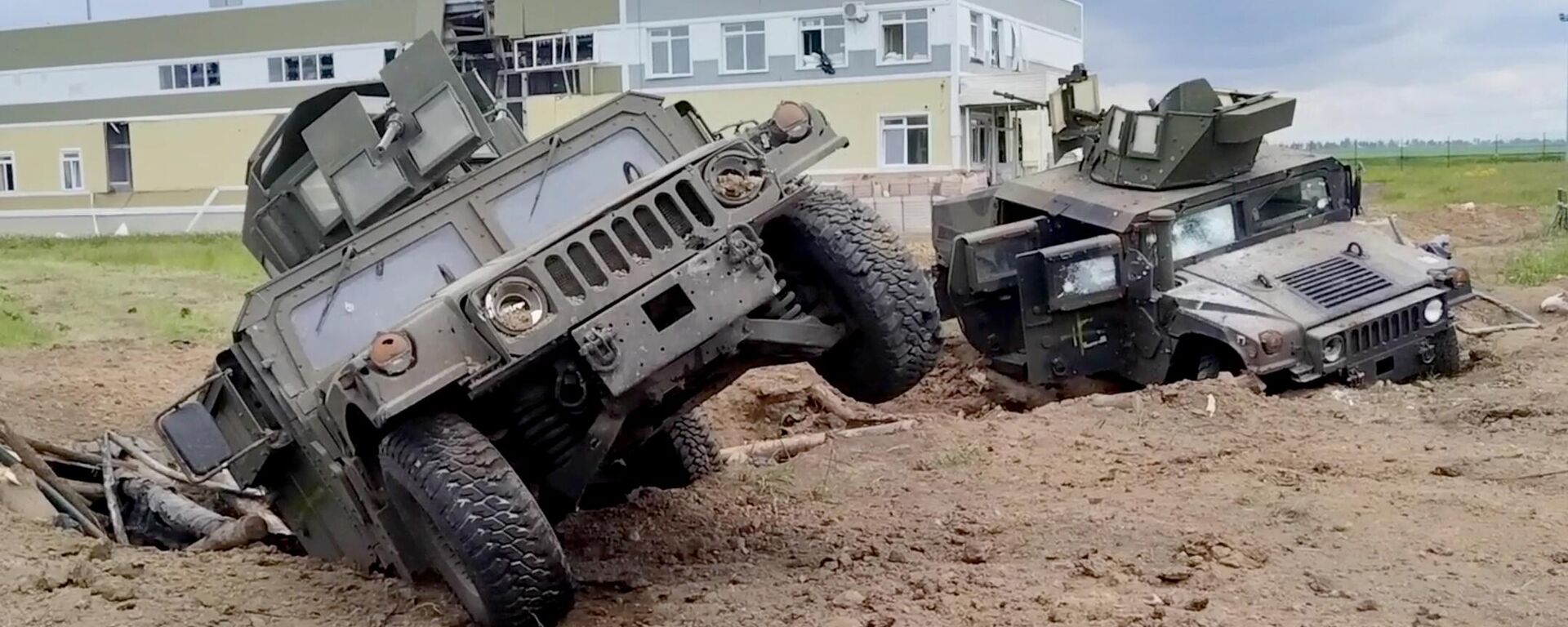https://sputnikglobe.com/20230720/scott-ritter-ukrainian-counteroffensive-stumbles-over-russian-minefields-1112007543.html
Scott Ritter: Ukrainian Counteroffensive Stumbles Over Russian Minefields
Scott Ritter: Ukrainian Counteroffensive Stumbles Over Russian Minefields
Sputnik International
There has been a vigorous debate over the course of the past weeks and months about the failure of the US and NATO to provide Ukraine with modern fighter aircraft such as the F-16.
2023-07-20T12:30+0000
2023-07-20T12:30+0000
2023-07-23T09:07+0000
russia's special operation in ukraine
ukrainian crisis
mark milley
valery zaluzhny
russia
ukraine
nato
ukrainian counteroffensive attempt
https://cdn1.img.sputnikglobe.com/img/07e7/06/10/1111223184_0:8:1084:618_1920x0_80_0_0_570072583aa65b029162b18ff6bf8cc7.png
Valery Zaluzhny, the commander-in-chief of Ukraine’s armed forces, has lambasted the failure of the west to provide aircraft while at the same time pushing Ukraine to conduct a large-scale counteroffensive that no NATO country would dare attempt without possessing air superiority over the enemy.“A very limited number would be enough,” Zaluzhny said, indicating that if the west wanted Ukraine to succeed, then delivery of the F-16 fighters needed to happen soon.Not so fast, says the Chairman of the Joint Chiefs of Staff, General Mark Milley.“The casualties that the Ukrainians are suffering on this offensive are not so much from Russian airpower,” Milley observed. “They're from minefields—minefields that are covered with direct fire from anti-tank hunter-killer teams, that sort of thing.”It’s almost as if General Milley was familiar with the Russian way of war, as manifested in the doctrinal application of “maneuver defense”, where a combination of deep fires, distance mining, ambushes, fire sacs, flanking and raid detachments would be used to inflict enemy casualties, gain time, and preserve friendly forces, all the while accepting the potential for the temporary loss of territory.What's interesting is the battle that Milley describes—one where an attacking force must navigate defensive barriers consisting of minefields all the while coming under effective fire from anti-tank teams—describes combat with what the Russians call the screening force, operating within the so-called "crumple zone"—the initial part of the Russian defensive position designed to slow down and break up an attacking force.The screening forces are not tasked with decisively engaging the attacking force, but rather to disengage once the enemy has pushed through the "crumple zone", withdrawing to pre-planned defensive positions that are covered by the first line of the main defensive position, which itself is heavily protected by minefields. The point being made here is that Milley is all but acknowledging that the Ukrainians have failed to penetrate that part of the Russian defense—the forward screening positions—that are, by design, intended to be overcome.Doctrinally speaking, Russian air and artillery fires do not become decisively engaged until an attacking force reaches the first line of prepared defenses, after which both air and artillery will be brought to bear on pre-designated “fire sacs” which the attacker is pushed into by a combination of minefields and defensive positions. Even here the Russians avoid decisive engagement, pulling back to a second line of defenses likewise defined by obstacle barriers consisting primarily of minefields.Russia has been fighting this way since the 1980’s, when the Soviet Ministry of Defense moved away from the “fight until you die” approach of holding on to a defensive position to adapt their tactics and operations to the reality of the modern battlefield. Any officer who has studied Soviet and/or Russian operational art is knowledgeable of this fact. The problem is that for the past 20 years, the United States military and NATO have not been focused on fighting the Russian threat, but rather dealing with low-intensity combat in places like Afghanistan, Iraq, Syria, and elsewhere.Therein lies the source of General Zaluzhny’s frustration—the NATO trainers who ran the Ukrainian forces earmarked for the ongoing counteroffensive through there paces in the training grounds of Germany were anything but experts on the subject they were teaching—the reduction of a fortified position in depth. Too many assumptions were made about the viability of untested NATO mine-sweeping technology, while too little attention was paid to the reality of Russian defensive warfare and the role played by mines in impeding any advance. Old school Cold Warriors, especially those who participated in the last major breaching assault against a heavily mined fortified defensive position—the Iraqi forces dug in along the Kuwaiti border with Saudi Arabia during Operation Desert Storm in February 1991, understand what it takes to methodically clear a minefield that is covered by enemy direct and indirect fire. The answer is firepower that meets or exceeds that available to the enemy. Ukraine possesses nothing close to the fire support available to Russia.The issue goes far beyond whether Ukraine possessed a few F-16 fighters—as General Milley pointed out, for Ukrainian F-16’s to have any impact on the battlefield, Ukraine would have to field hundreds of them, something that is beyond their ability to perform, and NATO’s ability to provide. Russia currently outguns Ukraine in terms of artillery tubes and multiple rocket launchers by a factor of seven- to ten-to one. Russia is simply able to lay down more firepower than their Ukrainian counterparts—and this doesn’t even consider the fact that Ukraine is running out of artillery ammunition.Russian electronic warfare capabilities likewise deny the Ukrainians the ability to communicate effective or employ precision weapons in a consistent fashion. In short, Ukraine was pre-ordained to be defeated during the counteroffensive. Any military professional who believed (or believes) otherwise is simply engaged in an act of self-delusion. Even more delusional is the notion that Ukraine can use the US-provided 155mm artillery cluster munitions to clear the Russian minefields—anyone suggesting this knows nothing about either Russian mines or cluster munitions.There is no easy way to clear a minefield. It is slow, dangerous, laborious work that must be undertaken by properly trained and properly equipped forces who are protected from enemy fire by the overwhelming application of friendly suppressive fires.Ukraine lacks this capability, and General Milley knows it. The fact that General Milley fails to admit this, and encourage the Ukrainians to stop their lemming-like appointment with death, is an indictment of his lack of professionalism as a soldier, and the United States as a society totally lacking in humanity.
https://sputnikglobe.com/20230720/vast-russian-minefields-cause-psychological-torment-for-ukrainian-troops--report-1112006017.html
https://sputnikglobe.com/20230527/ukrainians-may-fly-f-16s-with-wing--prayer-but-wont-be-effective-in-combat-1110641779.html
https://sputnikglobe.com/20230719/western-troops-unlikely-to-enter-ukrainian-battlefield---uk-foreign-secretary-1111995990.html
russia
ukraine
Sputnik International
feedback@sputniknews.com
+74956456601
MIA „Rossiya Segodnya“
2023
Scott Ritter
https://cdn1.img.sputnikglobe.com/img/07e6/0c/17/1105733958_0:0:334:334_100x100_80_0_0_b457e4e9c850ef224b0cc79059bb38df.jpg
Scott Ritter
https://cdn1.img.sputnikglobe.com/img/07e6/0c/17/1105733958_0:0:334:334_100x100_80_0_0_b457e4e9c850ef224b0cc79059bb38df.jpg
News
en_EN
Sputnik International
feedback@sputniknews.com
+74956456601
MIA „Rossiya Segodnya“
Sputnik International
feedback@sputniknews.com
+74956456601
MIA „Rossiya Segodnya“
Scott Ritter
https://cdn1.img.sputnikglobe.com/img/07e6/0c/17/1105733958_0:0:334:334_100x100_80_0_0_b457e4e9c850ef224b0cc79059bb38df.jpg
russia special military operation in ukraine, ukrainian crisis, ukrainian counteroffensive russian mines, minefields, russian defenses, cluster munitions in ukraine, who uses cluster munitions, ukraine counteroffensive updates, ukraine losing war
russia special military operation in ukraine, ukrainian crisis, ukrainian counteroffensive russian mines, minefields, russian defenses, cluster munitions in ukraine, who uses cluster munitions, ukraine counteroffensive updates, ukraine losing war
Scott Ritter: Ukrainian Counteroffensive Stumbles Over Russian Minefields
12:30 GMT 20.07.2023 (Updated: 09:07 GMT 23.07.2023) There has been a vigorous debate over the course of the past weeks and months about the failure of the US and NATO to provide Ukraine with modern fighter aircraft such as the F-16.
Valery Zaluzhny, the commander-in-chief of Ukraine’s armed forces, has lambasted the failure of the west to provide aircraft while at the same time pushing Ukraine to conduct a large-scale counteroffensive that no NATO country would dare attempt without possessing air superiority over the enemy.
“
A very limited number would be enough,” Zaluzhny said, indicating that if the west wanted Ukraine to succeed,
then delivery of the F-16 fighters needed to happen soon.
Not so fast, says the Chairman of the Joint Chiefs of Staff, General Mark Milley.
“The casualties that the Ukrainians are suffering on this offensive are not so much from Russian airpower,” Milley observed. “They're from minefields—minefields that are covered with direct fire from anti-tank hunter-killer teams, that sort of thing.”
It’s almost as if General Milley was familiar with the Russian way of war, as manifested in the doctrinal application of “maneuver defense”, where a combination of deep fires, distance mining, ambushes, fire sacs, flanking and raid detachments would be used to inflict enemy casualties, gain time, and preserve friendly forces, all the while accepting the potential for the temporary loss of territory.
What's interesting is the battle that Milley describes—one where an attacking force must navigate defensive barriers consisting of minefields all the while coming under effective fire from anti-tank teams—describes combat with what the Russians call the screening force, operating within the so-called "crumple zone"—the initial part of the Russian defensive position designed to slow down and break up an attacking force.
The screening forces are not tasked with decisively engaging the attacking force, but rather to disengage once the enemy has pushed through the "crumple zone", withdrawing to pre-planned defensive positions that are covered by the first line of the main defensive position, which itself is heavily protected by minefields. The point being made here is that Milley is all but acknowledging that the Ukrainians
have failed to penetrate that part of the Russian defense—the forward screening positions—that are, by design, intended to be overcome.
Doctrinally speaking, Russian air and artillery fires do not become decisively engaged until an attacking force reaches the first line of prepared defenses, after which both air and artillery will be brought to bear on pre-designated “fire sacs” which the attacker is pushed into by a combination of minefields and defensive positions. Even here the Russians avoid decisive engagement, pulling back to a second line of defenses likewise defined by obstacle barriers consisting primarily of minefields.
Russia has been fighting this way since the 1980’s, when the Soviet Ministry of Defense moved away from the “fight until you die” approach of holding on to a defensive position to adapt their tactics and operations to the reality of the modern battlefield. Any officer who has studied Soviet and/or Russian operational art is knowledgeable of this fact. The problem is that for the past 20 years, the United States military and NATO have not been focused on fighting the Russian threat, but rather
dealing with low-intensity combat in places like Afghanistan, Iraq, Syria, and elsewhere.
Therein lies the source of General Zaluzhny’s frustration—the NATO trainers who ran the Ukrainian forces earmarked for the ongoing counteroffensive through there paces in the training grounds of Germany were anything but experts on the subject they were teaching—the reduction of a fortified position in depth. Too many assumptions were made about the viability of untested NATO mine-sweeping technology, while too little attention was paid to the reality of Russian defensive warfare and the role played by mines in impeding any advance.
Old school Cold Warriors, especially those who participated in the last major breaching assault against a heavily mined fortified defensive position—the Iraqi forces dug in along the Kuwaiti border with Saudi Arabia during Operation Desert Storm in February 1991, understand what it takes to methodically clear a minefield that is covered by enemy direct and indirect fire. The answer is firepower that meets or exceeds that available to the enemy. Ukraine possesses nothing close to the fire support available to Russia.
The issue goes far beyond whether Ukraine possessed a few F-16 fighters—as General Milley pointed out, for Ukrainian F-16’s to have any impact on the battlefield, Ukraine would have to field hundreds of them, something that is beyond their ability to perform, and NATO’s ability to provide. Russia currently outguns Ukraine in terms of artillery tubes and multiple rocket launchers by a factor of seven- to ten-to one. Russia is simply able to lay down more firepower than their Ukrainian counterparts—and this doesn’t even consider the fact that Ukraine is running out of artillery ammunition.
Russian electronic warfare capabilities likewise deny the Ukrainians the ability to communicate effective or employ precision weapons in a consistent fashion. In short, Ukraine was pre-ordained to be defeated during the counteroffensive. Any military professional who believed (or believes) otherwise is simply engaged in an act of self-delusion. Even more delusional is the notion that
Ukraine can use the US-provided 155mm artillery cluster munitions to clear the Russian minefields—anyone suggesting this knows nothing about either Russian mines or
cluster munitions.
There is no easy way to clear a minefield. It is slow, dangerous, laborious work that must be undertaken by properly trained and properly equipped forces who are protected from enemy fire by the overwhelming application of friendly suppressive fires.
Ukraine lacks this capability, and General Milley knows it. The fact that General Milley fails to admit this, and encourage the Ukrainians to stop their lemming-like appointment with death, is an indictment of his lack of professionalism as a soldier, and the United States as a society totally lacking in humanity.






